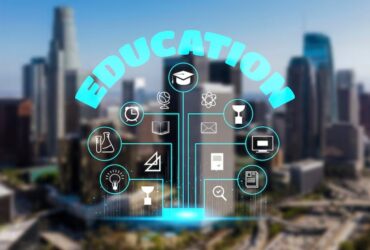The world of education technology, or EdTech, never stops evolving. As we move through 2024, a new wave of innovative tools and platforms are reshaping how students learn and teachers teach.
From AI-powered tutoring to immersive virtual labs, here are 10 cutting-edge EdTech solutions making an impact this year:
1. Personalized AI Tutors
AI is revolutionizing one-on-one learning with intelligent tutoring systems that adapt to each student’s needs. These AI tutors provide targeted lessons, instant feedback, and 24/7 support to help learners master concepts at their own pace.
2. Virtual and Augmented Reality Labs
Imagine dissecting a frog or exploring the solar system without leaving the classroom. That’s now possible with VR and AR educational experiences. Students can interact with realistic 3D models, conduct virtual experiments, and visualize complex concepts in entirely new ways.
3. Gamified Learning Platforms
Learning becomes an engaging game with tools that transform lessons into quests, challenges and adventures. Through gamified apps and websites, students earn points, level up their skills, and compete with peers while mastering academic content. It’s learning disguised as fun.
4. Collaborative Online Whiteboards
Cloud-based whiteboards are the ultimate tool for real-time brainstorming and group work. Multiple students can draw, write and sketch on a shared digital canvas, whether they’re in the same room or across the globe. It’s a simple yet powerful way to foster teamwork and creativity.
5. Advanced Scientific Equipment
Cutting-edge devices are bringing professional-grade science into the classroom. For example, Korvus Technology offers sputtering systems that allow students to experiment with advanced thin film deposition. Tools like these expose learners to real-world techniques used in research and industry.
6. Adaptive Learning Software
What if educational software could intelligently adjust to a student’s skill level? Adaptive learning programs do just that by continuously assessing performance and modifying content to match each learner’s needs. It’s like having a personal tutor that scales to the entire class.
7. Interactive Digital Textbooks
Say goodbye to heavy, static textbooks. A new breed of digital texts embed multimedia elements like videos, 3D models, and interactive graphs. Students can dive deeper into concepts with a tap or click. Teachers can even customize content to match their lesson plans.
8. AI-Enhanced Language Learning
Learning a new language becomes intuitive with AI-powered tools that provide instant feedback on pronunciation and grammar. Advanced speech recognition assesses a learner’s verbal skills, while natural language processing serves up relevant vocabulary and phrases. It’s the closest thing to a personal language tutor.
9. Blockchain-Based Credentials
Blockchain isn’t just for cryptocurrency. The secure, decentralized ledger is now being used to issue and verify academic credentials. With blockchain certificates, students have permanent, tamper-proof records of their achievements they can easily share with schools and employers.
10. Robotic Teaching Assistants
While they won’t replace human teachers anytime soon, friendly classroom robots are taking on roles as tutors and teaching aides. From assisting with special needs education to leading language drills, these sophisticated bots are becoming valuable members of the teaching team.
| EdTech Category | Example Tools |
| AI Tutoring | Knewton, Carnegie Learning, Querium |
| VR/AR Learning | Labster, MEL Science, Lifeliqe |
| Gamified Platforms | Kahoot!, Classcraft, Prodigy Math Game |
| Online Whiteboards | Miro, Stormboard, Limnu |
| Adaptive Software | DreamBox Learning, ScootPad, Fishtree |
| Digital Textbooks | Top Hat, Inkling, Chegg |
As these and other innovative tools continue to evolve, the future of education looks brighter than ever. By harnessing the power of technology, educators can create more engaging, effective, and inclusive learning experiences for students of all ages and abilities.












































Leave a Reply